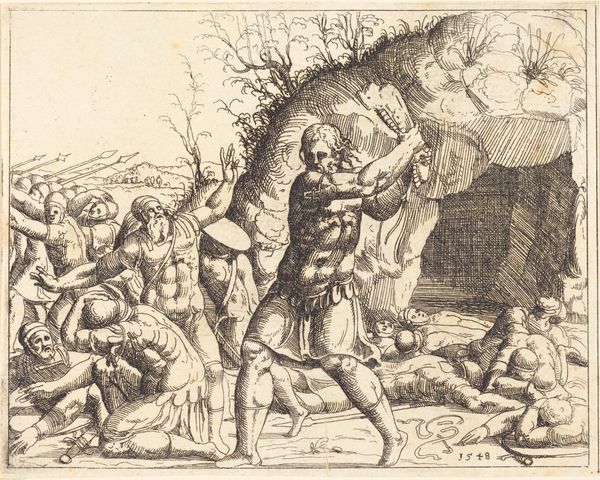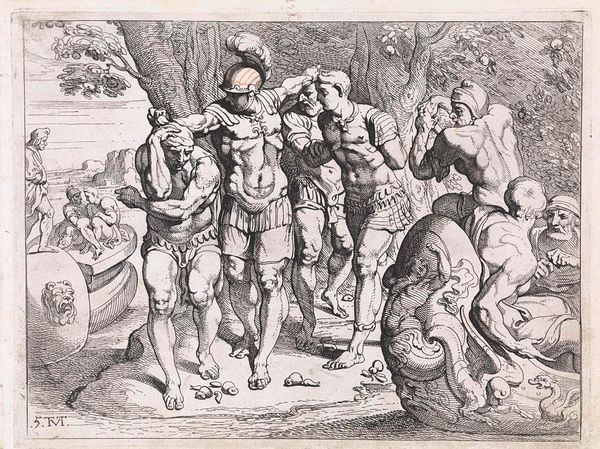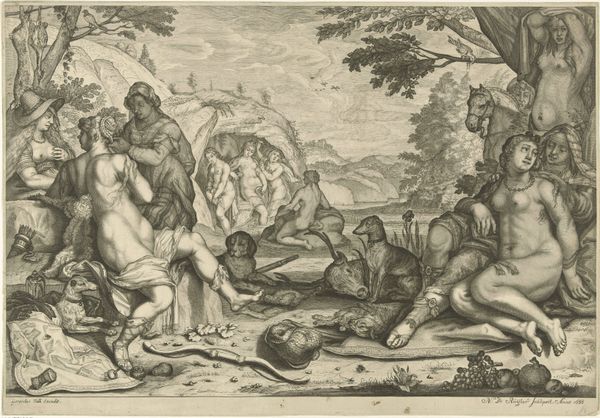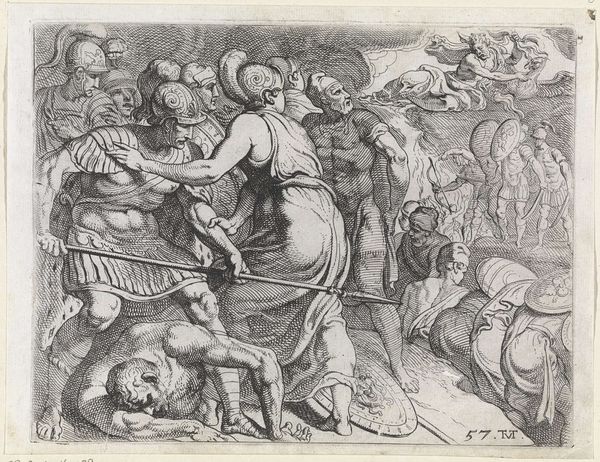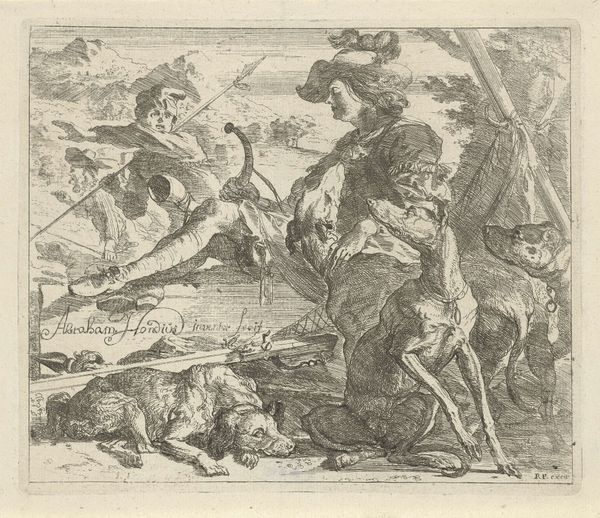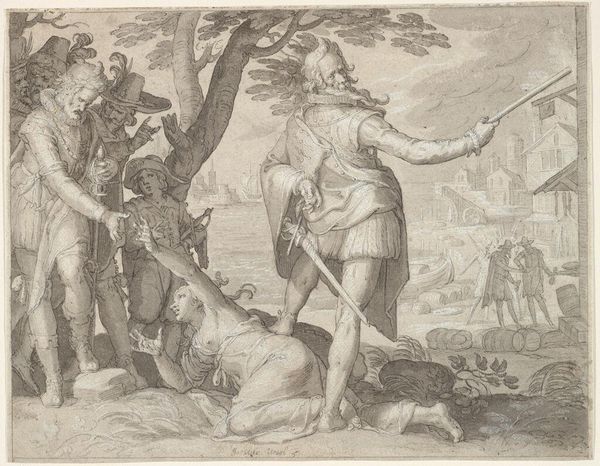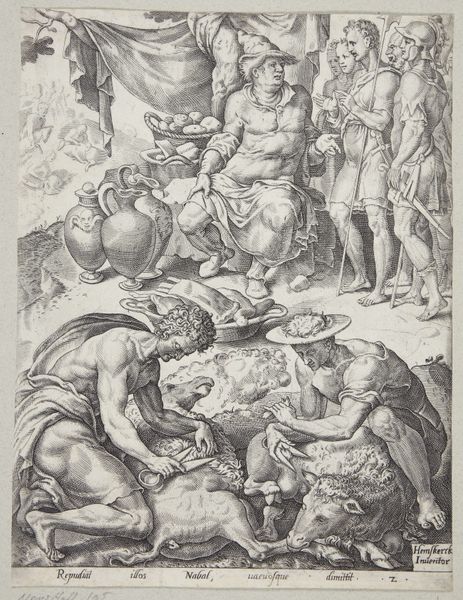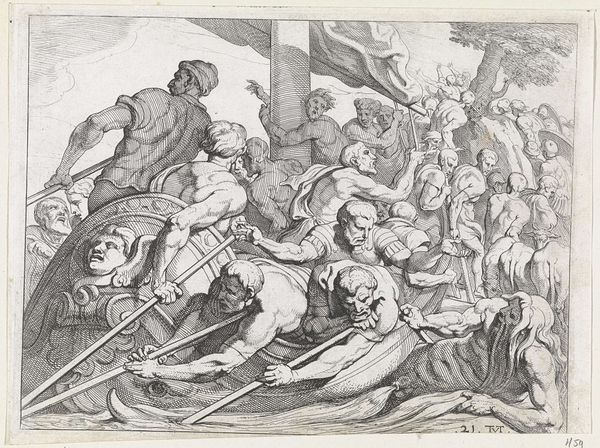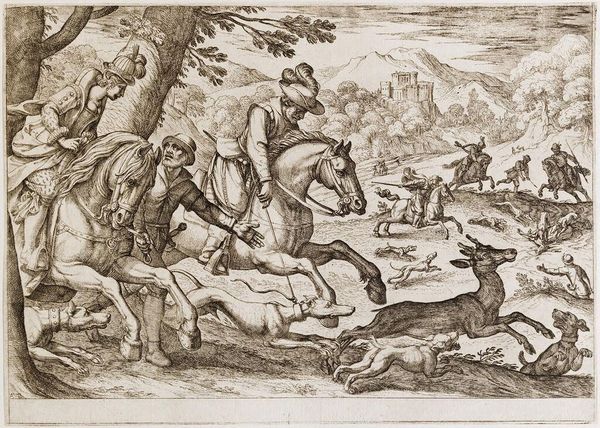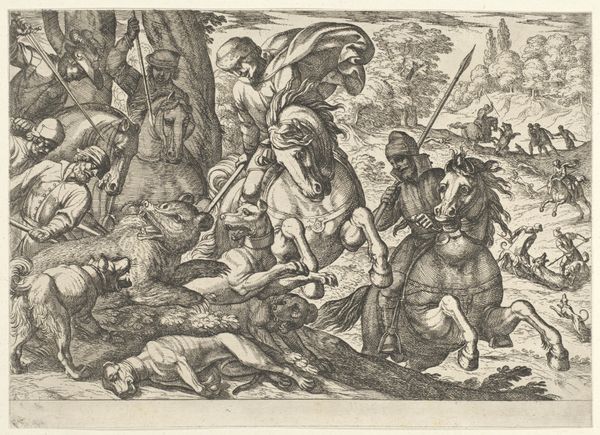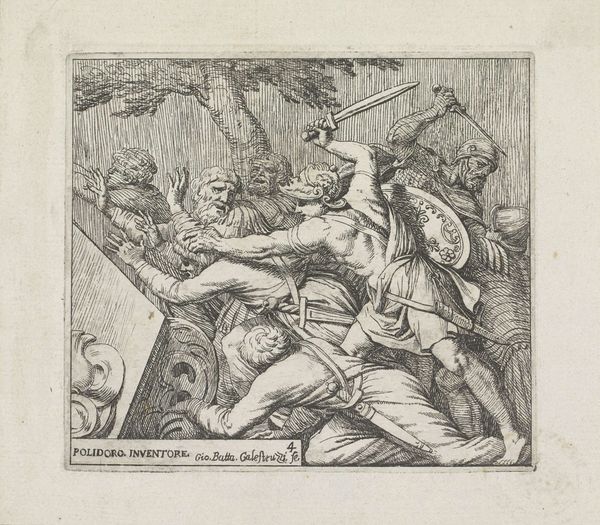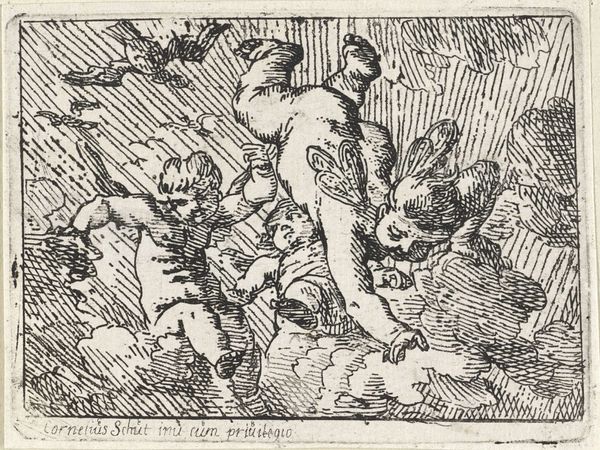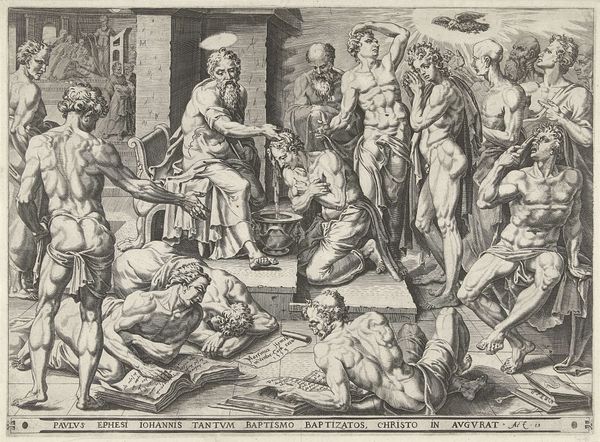
print, engraving
#
narrative-art
#
baroque
# print
#
classical-realism
#
figuration
#
history-painting
#
engraving
Dimensions: height 198 mm, width 177 mm
Copyright: Rijks Museum: Open Domain
Editor: So, this is Theodoor van Thulden’s engraving, “Return of Agamemnon and Cassandra in Mycene,” created around 1632. The stark lines of the engraving create a dramatic tension. What story of labor and class dynamics do you think is being told through this material? Curator: What I immediately notice is the stark contrast in the portrayal of the figures and their labor. Look at the polished armor and classical drapery lavished upon Agamemnon and Cassandra versus the raw, almost brutal depiction of the prostrate figures at their feet. The material difference isn’t just aesthetic; it reflects a real social hierarchy. Consider the labor involved in producing these materials; who benefited from it, and who was exploited? Editor: That’s a powerful way to look at it. The engraving medium itself—what does that add to the story? Is it democratizing because it's easily reproduced, or is it reinforcing power by glorifying the ruling class through its imagery? Curator: Exactly! The engraving process involved skilled labor, requiring workshops, materials, and a market for its distribution. Think about who had access to these images. Were they intended for mass consumption, shaping public opinion about power structures, or were they confined to elite collectors? Was Van Thulden, by reproducing a history, creating a narrative for the people to revere the classism of the past? Or challenging us to acknowledge it? Editor: So, we need to consider the networks of production and consumption surrounding this print to understand its full meaning. Curator: Precisely. We can read the artwork as a product of its time, shaped by and commenting on the social and economic relations inherent in 17th-century European society. Even the use of a classical narrative reinforces ideas around established power. How has material culture preserved systems of injustice? Editor: That's insightful. I hadn’t considered the engraving as more than just a visual representation, but it is so much more when viewed in the material context. Curator: Thinking about art through the lens of production helps us expose embedded ideas of the ruling class and hopefully see the art's impact on present day values.
Comments
No comments
Be the first to comment and join the conversation on the ultimate creative platform.
